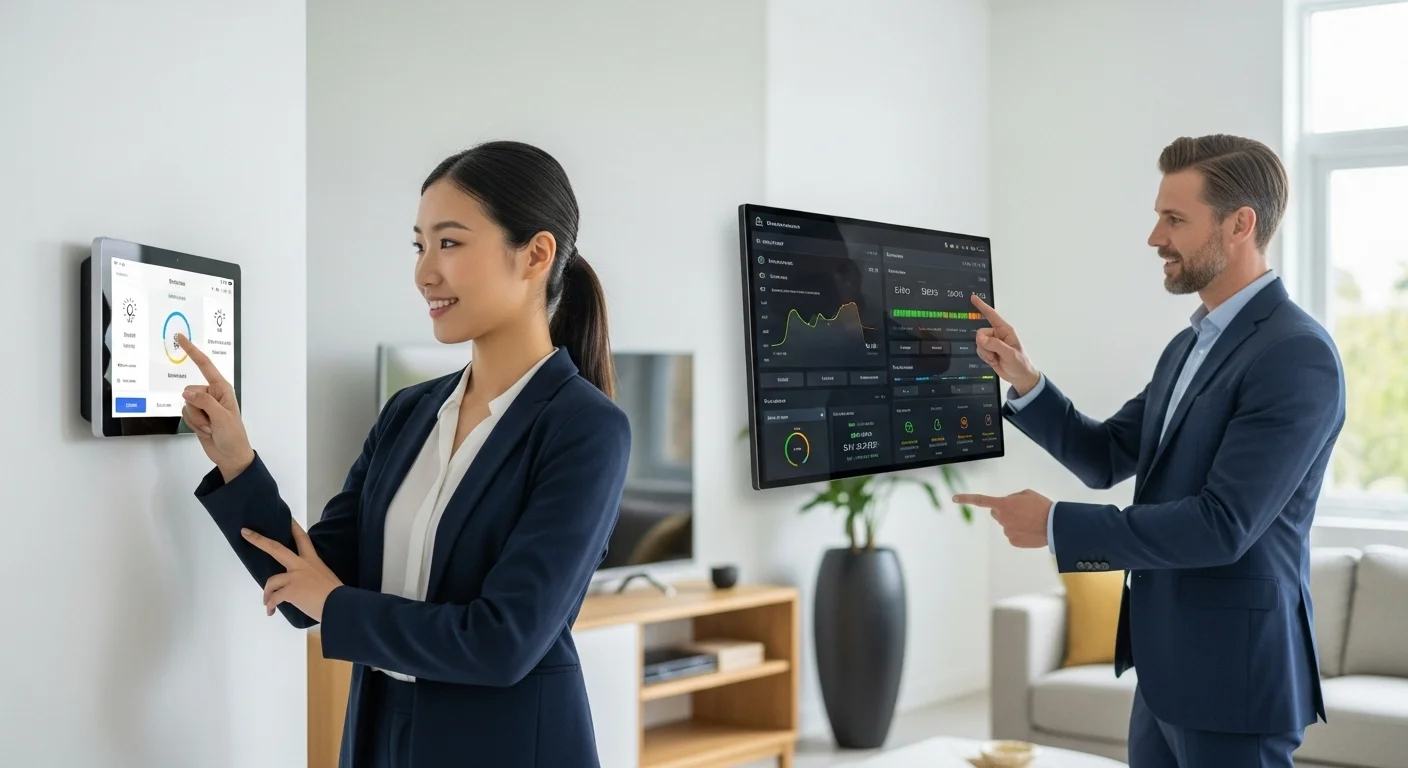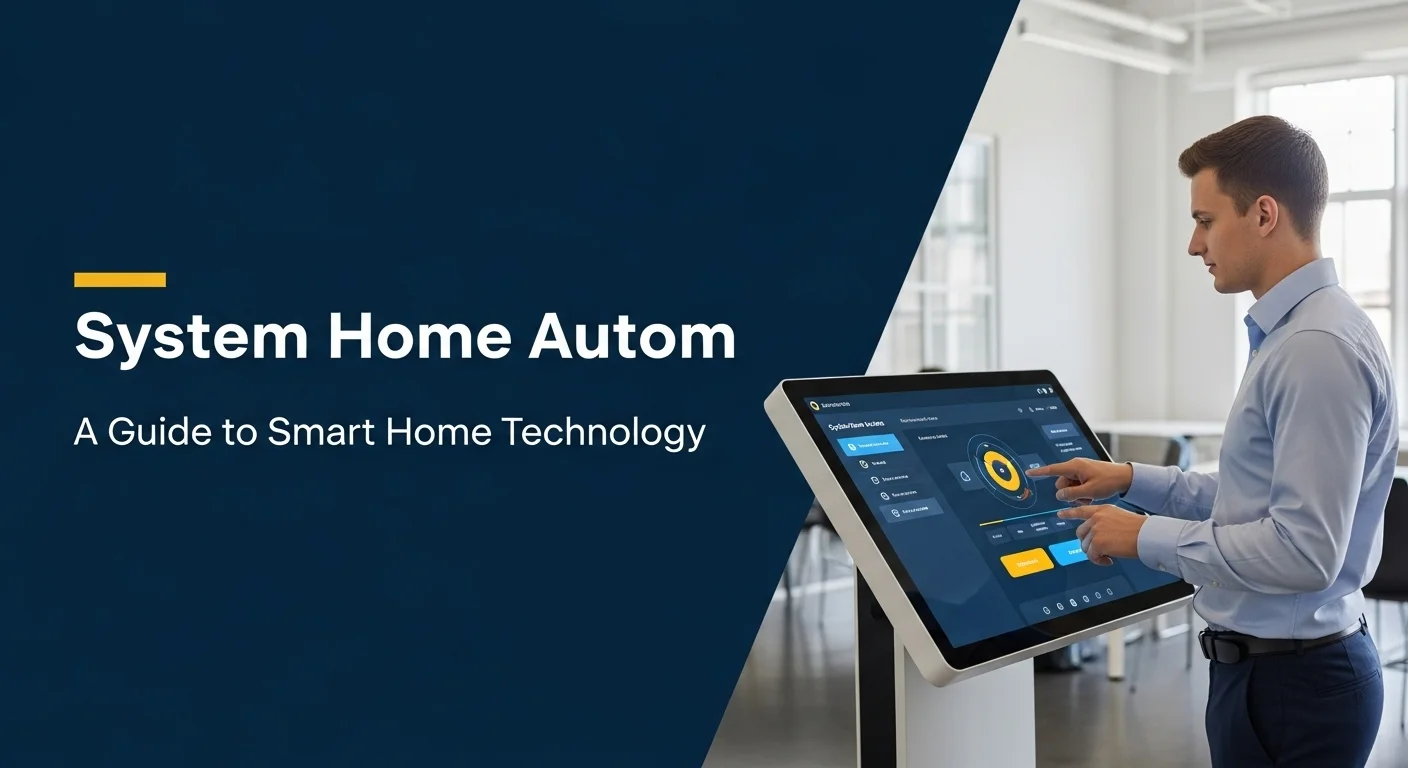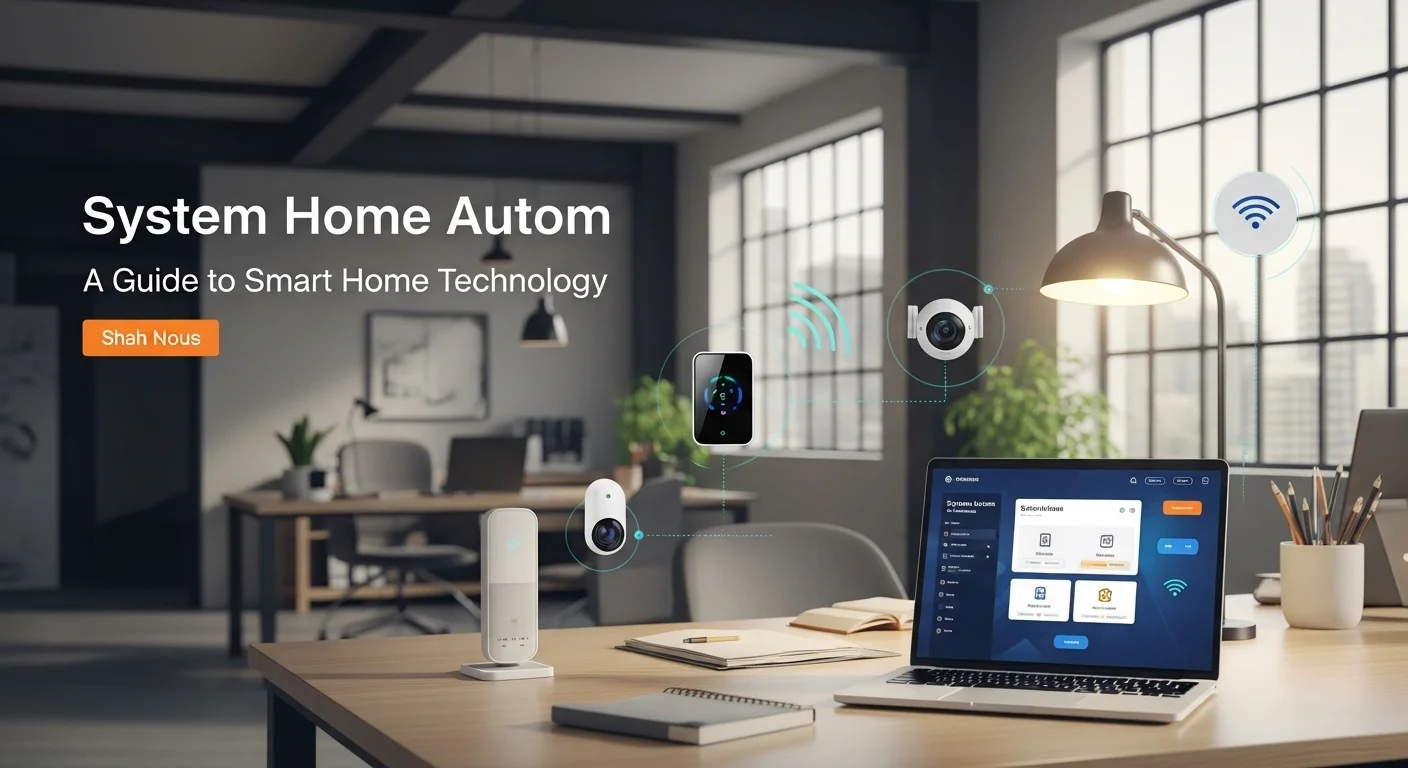Smart Home Automation: Your Personal Guide to a Smarter Life

Executive Summary
Home automation, or what we often call a 'smart home,' is all about making your life easier and more efficient through technology. In my experience, it’s not about being futuristic; it’s about practical convenience. In this guide, I'm going to pull back the curtain on how it all works. We'll explore everything from the Internet of Things (IoT) devices that are the building blocks of a smart home, to the clever AI that ties it all together. For business owners, I'll show you how these same ideas can create a smart office that saves money and boosts security. For the tech lovers, we'll dive into the fun of customizing your own setup. I've spent years working with these systems, from the ones you can buy off the shelf to high-end professional installations. I'll share what I've learned about the best platforms, open-source options, and how to get started. The smart home market is booming for a reason—it's technology that genuinely improves the way we live and work.
Table of Contents
Table of Contents
- What Exactly is a Smart Home?
- Your Guide to Choosing the Right Smart Home System
- Tips and Strategies for a Great Smart Home Experience
What Exactly is a Smart Home?
Have you ever been tucked into bed and realized you left the kitchen light on? Or wished your home was warm and cozy the moment you walked in from a cold day? That simple desire for comfort and convenience is the heart of home automation. At its core, a smart home is one where various devices are connected and can 'talk' to each other and to you, usually through an app on your phone or a voice assistant. It’s a practical application of the Internet of Things (IoT), a concept where everyday objects—lights, thermostats, locks, and speakers—are given a digital brain. The importance of this technology isn't just about convenience, though. It represents a real shift in how we manage our living and working spaces. The global smart home market is skyrocketing, expected to be worth over $135 billion by 2025, because it offers tangible benefits: energy efficiency, enhanced security, and incredible comfort. From a technology standpoint, it's fascinating. These systems learn your habits. Your thermostat can learn when you're away and lower the heat to save energy. Your lights can learn to turn on as you arrive home. This intelligence comes from a blend of hardware (like sensors and controllers) and smart software. The amount of data these systems produce is also incredibly valuable, helping to create even more personalized and predictive experiences. For my business clients, the leap from a smart home to a 'smart office' is a natural one. The principles are the same. In a commercial setting, automation leads to serious cost savings. Imagine lights and heating that automatically shut off in empty conference rooms. Security gets a major upgrade too, with integrated cameras and access systems you can monitor from anywhere. I’ve seen this technology transform industries from hospitality, creating personalized guest experiences in hotel rooms, to healthcare, where it helps with remote patient monitoring. The benefits truly are for everyone. For you at home, it’s about making daily life a little smoother and more secure. For a business, it means lower bills and a safer, more efficient workplace. As this technology becomes less of a luxury and more of a standard, understanding it is key for just about everyone.

Your Guide to Choosing the Right Smart Home System
When you decide to dive into the world of smart home technology, it can feel like there are a million choices. I always tell people to think of it as choosing a path based on your budget, technical comfort level, and what you ultimately want to achieve. Let’s break down the main routes you can take.
Path 1: The Easy DIY Approach
For most people just starting out, this is the best way to go. The big names here are Amazon Alexa, Google Home, and Apple HomeKit. These platforms are built around their voice assistants and are designed to be user-friendly. In my experience, Amazon Alexa has a slight edge in voice recognition and works with a massive number of third-party devices. Google Home is incredibly intuitive, especially if you're already an Android phone user, as it integrates perfectly with Google's services. Apple HomeKit is the top choice for those in the Apple ecosystem, as it puts a huge emphasis on security and privacy, though it can be a bit more restrictive in terms of compatible devices. These are perfect for setting up lighting scenes, scheduling your coffee maker, or controlling your thermostat with your voice.
Path 2: The High-End, Professional Experience
Now, if you're dreaming of a home where the lights, climate, security, and multi-room audio and video all work together flawlessly from one beautiful interface, you're looking at a professional-grade system. Companies like Control4, Crestron, and Savant are the gold standard here. These are not systems you buy at a big-box store. They require a certified professional to design, install, and program them specifically for your home or business. The result is rock-solid reliability and a completely seamless experience. Luxury homes, high-end hotels, and corporate boardrooms often rely on these systems. Finding a qualified pro is as simple as searching online for certified installers in your area who can provide a full consultation and manage the project from start to finish.
Path 3: The Tinkerer's Dream with Open Source
There's a third path, one that's close to my heart as a tech enthusiast. For those who love to customize, prioritize privacy above all else, and don't mind a bit of a project, there are open-source platforms. The two biggest players are Home Assistant and OpenHAB. These are amazing because they can run on a small, local computer (like a Raspberry Pi), meaning your data stays with you, not on a company's server. Home Assistant has a vibrant community and can integrate with almost any smart device you can think of. While these platforms offer the ultimate flexibility, they do have a steeper learning curve. This is for the hobbyist who enjoys building a system that is truly their own.
Smart Technology for Your Business
For a business, choosing a system involves a few extra considerations. Scalability is key—the system needs to grow with your company. Security is paramount; with so many devices on your network, you need to protect against breaches. You also need to think about the return on investment (ROI). A professional system might have a high upfront cost, but the savings on energy and improved efficiency can be substantial. Whichever path you choose, from a simple smart plug to a fully integrated building, the key is to find the solution that fits your specific needs and goals.

Tips and Strategies for a Great Smart Home Experience
Getting a smart home system up and running is one thing; making it a truly helpful part of your life is another. Over the years, I've gathered some tips and best practices that can make all the difference, whether you're a beginner or a seasoned pro.
Best Practices for Everyone
- My Number One Rule: Start Small. The sheer number of smart devices can be overwhelming. Don't try to automate your entire house at once. Pick one thing that would make your life easier—maybe smart lighting in the living room or a smart thermostat. This lets you learn your way around the system before you commit to more. The starter kits from Google or Amazon are perfect for this.
- Choose Your 'Brain' Carefully. The ecosystem you choose (like Google, Apple, or Amazon) is the central hub of your smart home. It dictates what devices will work and how you'll control them. If your whole family uses iPhones, Apple HomeKit is probably a smooth fit. Think about what you already use and build from there.
- Take Network Security Seriously. Please don't skip this part. Every smart device is a potential door into your home network. Use a strong, unique password for your Wi-Fi and enable WPA3 encryption if your router supports it. I also strongly recommend creating a separate guest network for visitors and, if you're able, putting all your smart devices on their own isolated network (a VLAN) to keep them separate from your computers and phones. Always keep your device and router firmware updated.
- Aim for Local Control. Many devices rely on the cloud, which means if your internet goes down, they stop working. Whenever possible, look for devices that can be controlled locally. This is a huge advantage of open-source systems like Home Assistant. The new Matter standard is also helping with this, allowing devices to talk to each other directly without the internet.
Strategies for Power Users and Businesses
Once you move beyond basic controls, you can start optimizing for efficiency and creating truly powerful automations.
- Get Professional Help for Big Projects. If you're planning a complex setup for your home or business, the value of a professional installer is immense. Look for certified experts for brands like Control4 or Crestron. Their expertise in system design and ongoing support is crucial for business-critical functions.
- Master 'Scenes' and 'Routines'. The real magic happens when devices work together. Create a 'Good Morning' routine that slowly fades up your lights, raises the blinds, and starts your favorite playlist. For a business, a 'Close Up' scene could arm the alarm, turn off all the lights and computers, and lock the doors with one tap.
- Use the Data. Your smart system is collecting valuable information. Use energy monitoring plugs to see which appliances are energy hogs. In an office, occupancy data can help you decide if you're using your space efficiently. Many professional systems offer analytics dashboards to help you make smarter decisions.
- Embrace Open Source for Full Control. If you have unique needs or just love to tinker, an open-source platform offers unlimited potential. You can write your own automations and build a system that's perfectly tailored to you, without the limits of a commercial product.
Ultimately, enhancing your life with smart technology is a journey of learning and tweaking. By starting with a secure foundation and a clear plan, you can create an intelligent, efficient, and secure environment. For staying on top of the latest trends in this fast-moving field, I often check sources like TechCrunch for breaking news and analysis.
Expert Reviews & Testimonials
Sarah Johnson, Business Owner ⭐⭐⭐
This was a really helpful overview for my small business. I wish it had a few more specific case studies for retail, but it definitely got me thinking about how to save on energy costs. A solid starting point!
Mike Chen, IT Consultant ⭐⭐⭐⭐
As an IT guy, I appreciated the breakdown of DIY vs. professional systems. The explanation of open-source options was particularly clear. A well-written piece that avoids getting too technical.
Emma Davis, Tech Expert ⭐⭐⭐⭐⭐
Fantastic article! I'm studying tech integration, and this guide connected all the dots for me. It's comprehensive, easy to follow, and the personal perspective makes it much more engaging than a textbook. Highly recommend!



